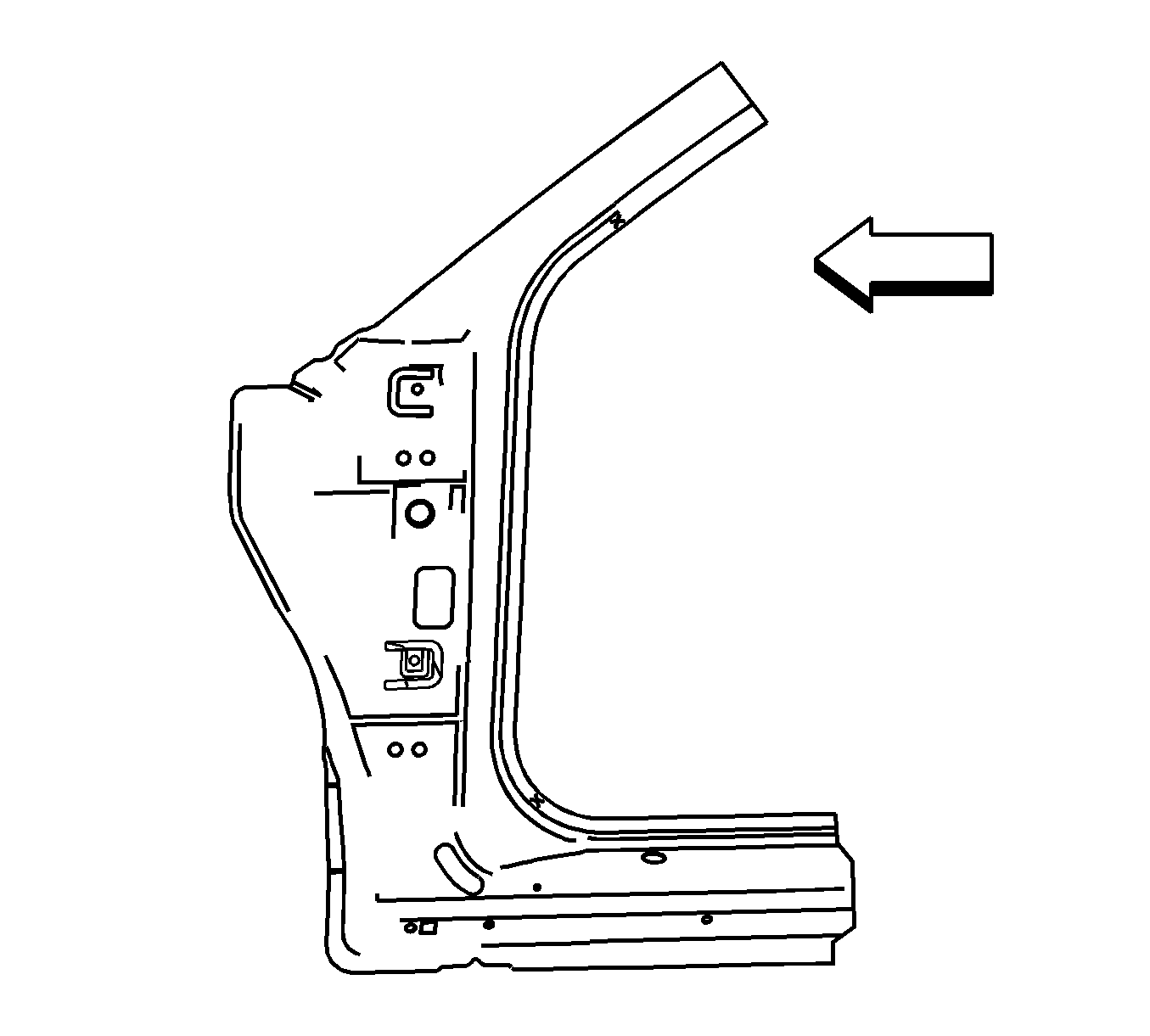Removal Procedure
Caution: Refer to Approved Equipment for Collision Repair Caution in the Preface section.
Caution: Sectioning should be performed only in the recommended areas. Failure to do so may compromise the structural integrity of the vehicle and cause personal injury if the vehicle is in a collision.

The sedan and extended sedan body side outer panel are available in one-piece side frames. You can perform any one of these replacement procedures separately or in any combination, depending upon the extent of damage to the vehicle. Sectioning must take place in specified areas only. Stay away from the door and window opening radius areas. Section only in straight areas of the openings.
- Disable the SIR system. Refer to SIR Disabling and Enabling in SIR.
- Disconnect the negative battery cable. Refer to Battery Negative Cable Disconnection and Connection in Engine Electrical.
- Remove all related panels and components.
- Repair as much of the damaged area as possible. Refer to Dimensions - Body .
- Remove the sealers and anti-corrosion materials from the repair area, as necessary. Refer to Anti-Corrosion Treatment and Repair in Paint and Coatings.
- Locate the area on the panel where sectioning will be performed.
- Measure from any trim attachment hole within the recommended sectioning areas. Mark the location for section cutting on the vehicle at the windshield pillar and rocker panel locations.
- Locate and drill out all factory welds.
- Cut the panel at the location laid out in the previous steps.
- Remove the damaged hinge pillar.
Important: Sectioning can be done anywhere in the straight areas of the windshield pillar and along the rocker panel.

Important: Note the number and location of the factory welds for installation of the hinge pillar.
Important: Do NOT damage any other panels or reinforcements when cutting at the marked locations.

Installation Procedure
- Locate the area on the service panel to be sectioned.
- Measure and mark the cut line location on the service part at the same location as on the vehicle layout.
- Cut the outer front hinge pillar in corresponding locations to fit the remaining original panel. The sectioning joint should be trimmed to allow a gap of 1½ times the metal thickness at the sectioning joint.
- Create a 50 mm (2 in) backing plate from the unused portion of the service part for the windshield area.
- Create a 100 mm (4 in) backing plate from the unused portion of the service part for the rocker area.
- Trim the backing plates as necessary to fit behind the panel at the sectioning joint.
- Drill 8 mm (5/16 in) plug weld holes along the sectioning area in the service part, and at the locations noted from the original panel.
- Prepare all mating surfaces as necessary.
- Apply 3M Weld-Thru Coating P/N 05916 or equivalent to all mating surfaces.
- Fit the backing plates halfway into the sectioning joints, 25 mm (1 in) at the windshield pillar and 50 mm (2 in) at the rocker panel areas. Clamp the plates in place, and plug weld to the section joint
- Position the outer front pillar to the vehicle using 3-dimensional measuring equipment. Clamp the pillar in place.
- Plug weld accordingly.
- Plug weld accordingly.
- Stitch weld the butt weld locations.
- To create a solid weld with minimum heat distortion, make a 25 mm (1 in) stitch weld along the seam with gaps of 25 mm (1 in). Go back and complete the stitch weld.
- Clean and prepare all of the welded surfaces.
- Apply the sealers and anti-corrosion materials to the repair area, as necessary. Refer to Anti-Corrosion Treatment and Repair in Paint and Coatings.
- Paint the repaired area. Refer to Basecoat/Clearcoat Paint Systems in Paint and Coatings.
- Install all of the related panels and components.
- Connect the negative battery cable. Refer to Battery Negative Cable Disconnection and Connection in Engine Electrical.
- Enable the SIR system. Refer to SIR Disabling and Enabling in SIR.


Important: If the location of the original plug weld holes can not be determined, space the plug weld holes every 40 mm (1 1/2 in) apart.


